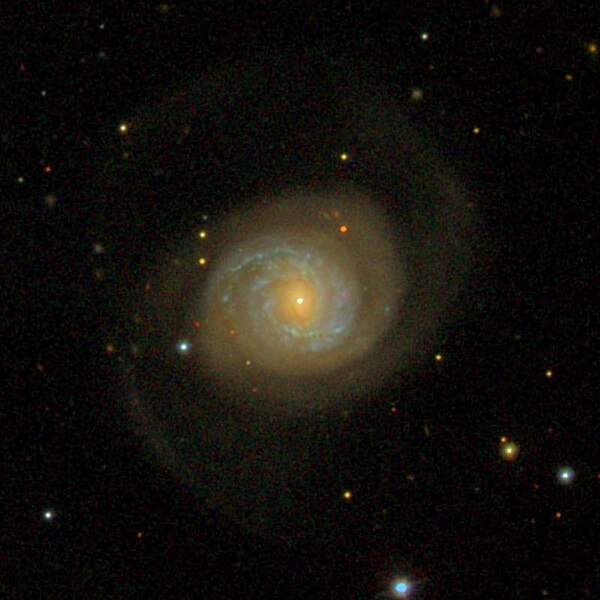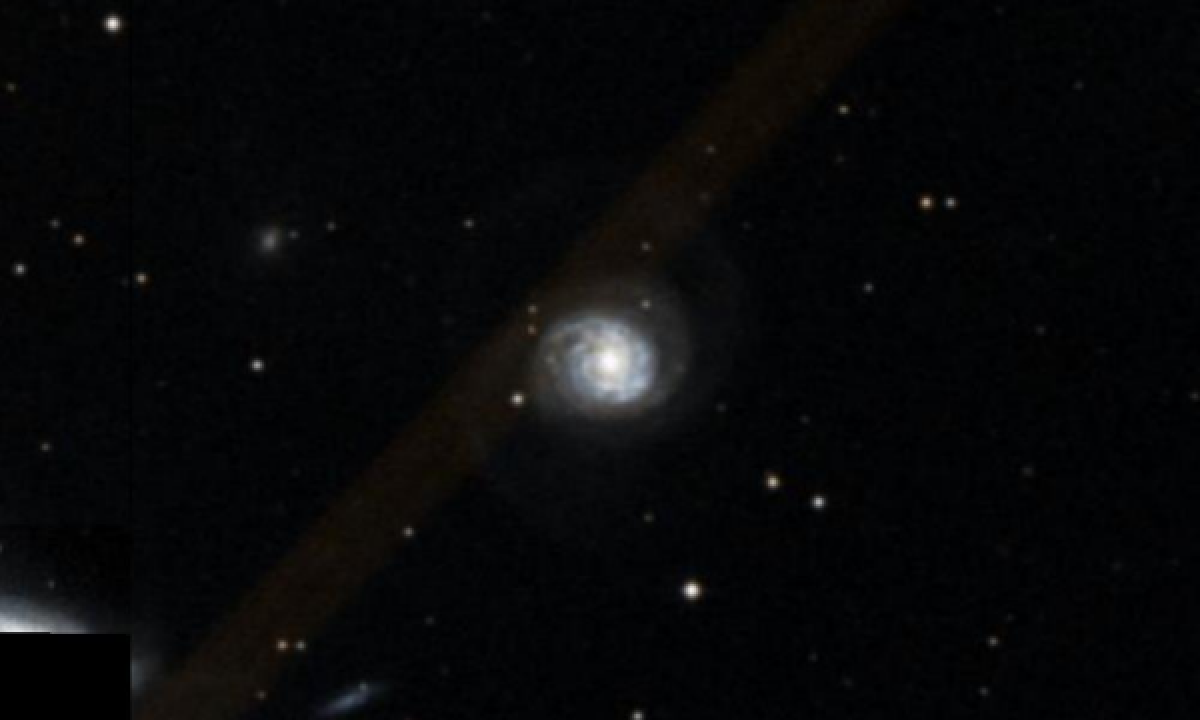The New General Catalogue of Nebulae and Clusters of Stars (abbreviated as NGC) is a catalogue of deep-sky objects compiled by John Louis Emil Dreyer in 1888. The NGC contains 7,840 objects, known as the NGC objects. It is one of the largest comprehensive catalogues, as it includes all types of deep space objects, including galaxies, star clusters, emission nebulae and absorption nebulae.
Know more about NGC
NGC 7769

NGC 7769 is an unbarred spiral galaxy in the constellation of Pegasus. Its velocity with respect to the cosmic microwave background is 3855 ± 25 km/s, which corresponds to a Hubble distance of 56.85 ± 4 Mpc (~185 million light-years). It was discovered by German-British astronomer William Herschel on 18 September 1784. The galaxies NGC 7769, together with NGC 7770 and NGC 7771, are listed together as Holm 820 in Erik Holmberg's A Study of Double and Multiple Galaxies Together with Inquiries into some General Metagalactic Problems, published in 1937. NGC 7769 also is listed as part of the five-member NGC 7771 Group (also known as LGG 483), which contains the 3 galaxies from Holm 820, NGC 7786, and UGC 12828. NGC 7769 is a LINER galaxy, i.e. it has a type of nucleus that is defined by its spectral line emission which has weakly ionized or neutral atoms, while the spectral line emission from strongly ionized atoms is relatively weak.
More Images:

Sources:
Wikipedia Page: NGC 7769
NGC 7769 at In-The-Sky website
